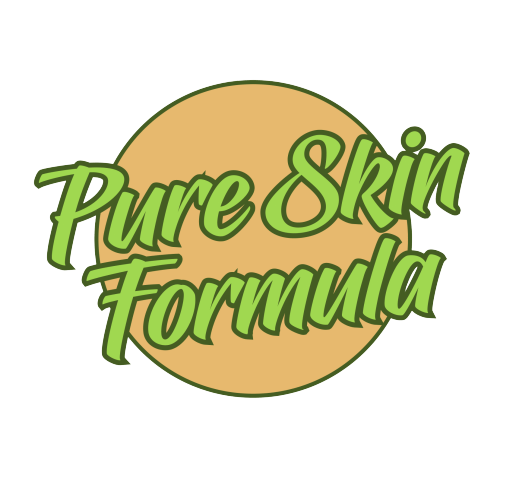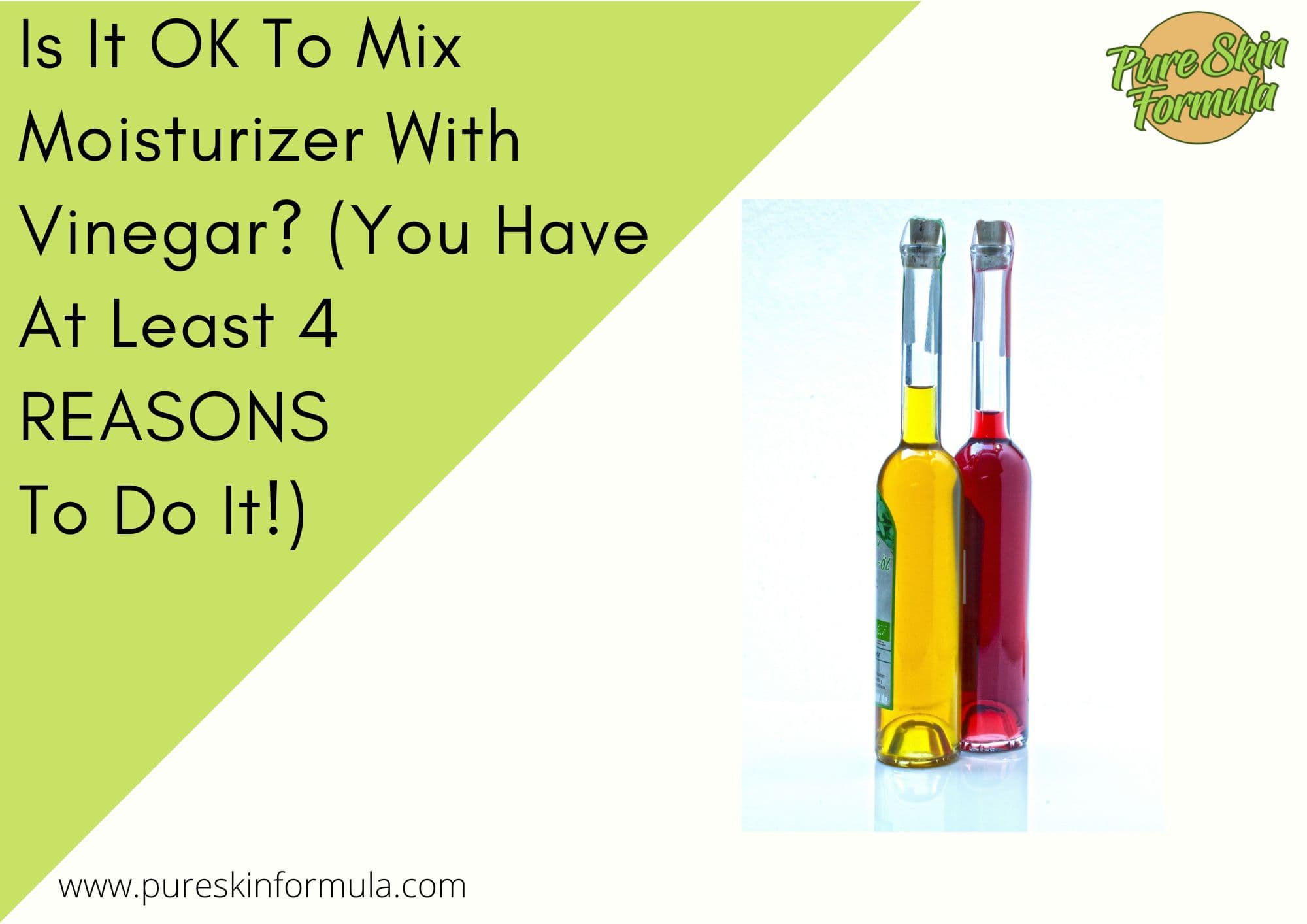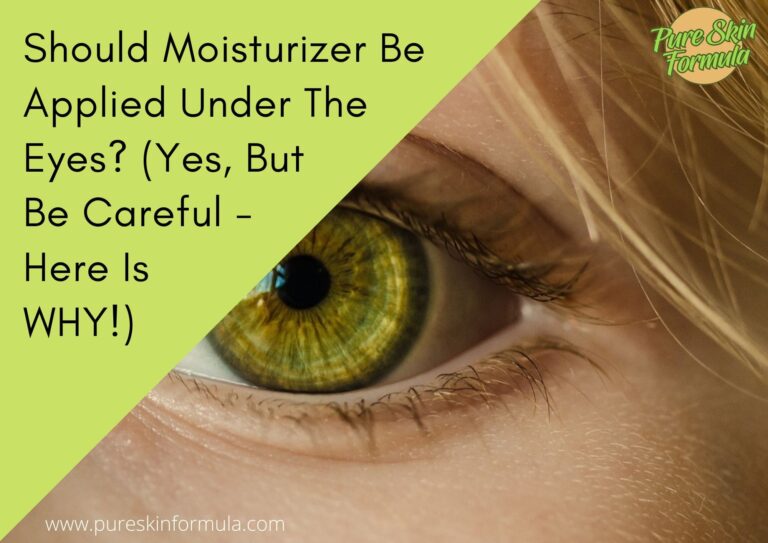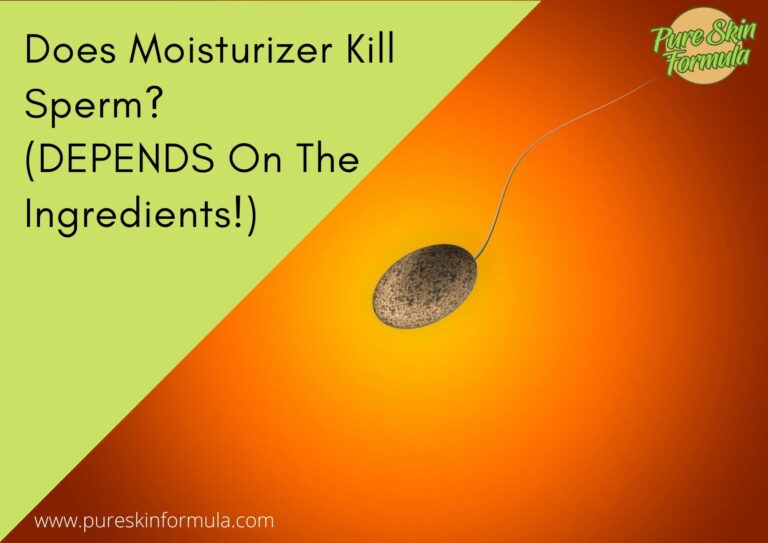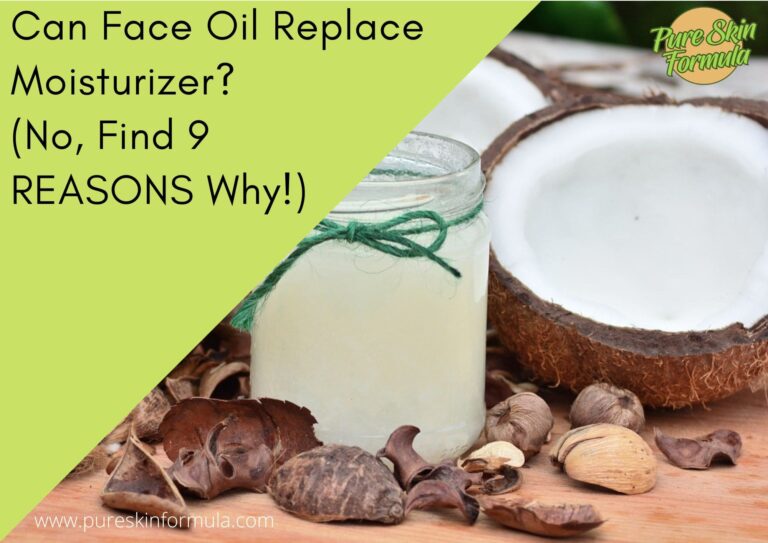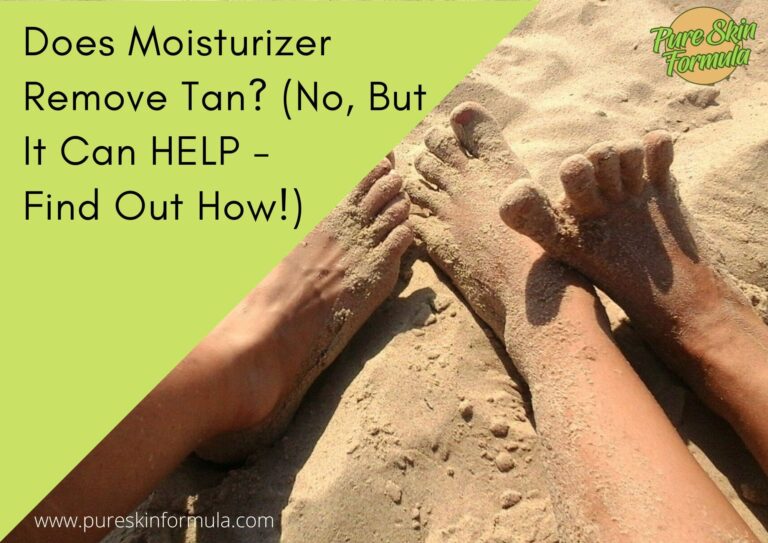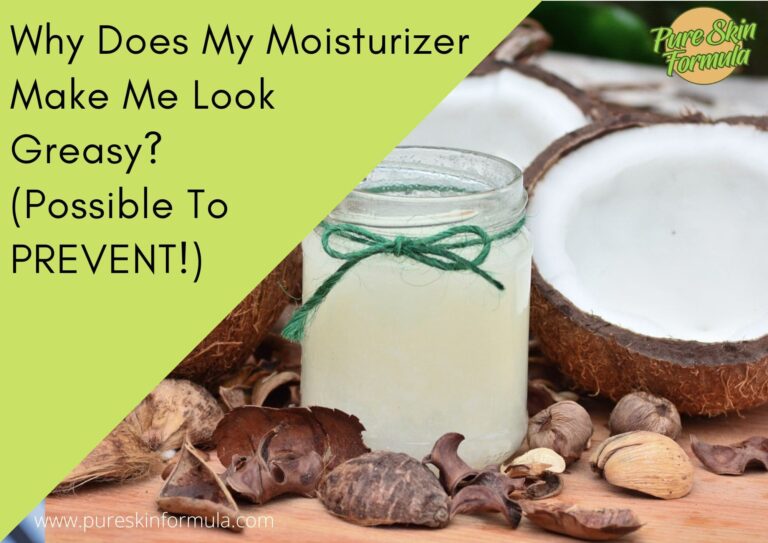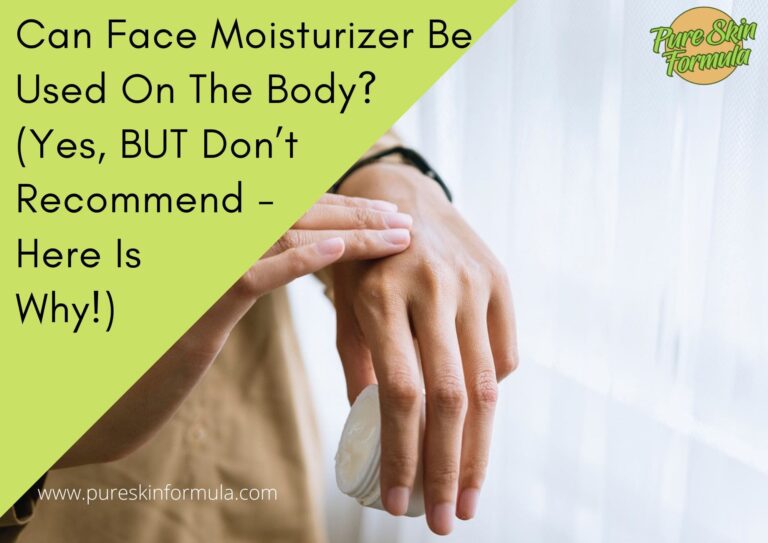Why should we discuss vinegar and moisturizer together? Some people make this DIY trick to experiment and blend different substances. Let’s take the statistics.
Emergenresearch.com says, “The global apple cider vinegar market size was USD 868.1 Million in 2021 and is expected to register a revenue CAGR of 5.6% during the forecast period.
Market revenue growth is primarily driven by factors such as rising conscious among consumers about health and increasing benefits of apple cider vinegar, which include lowering blood sugar and high cholesterol, promoting weight loss, controlling blood pressure, relieving itching and irritation from bites and stings and sunburn, removing toxins, minimizing body odor, and reducing acne and pimples.”
We can see so many benefits for the skin. That is why it is good to answer this question:
Is It OK To Mix Moisturizer With Vinegar?
It is OK because the vinegar balances the pH of the skin. It exfoliates it and has an antibacterial effect. Apple vinegar fights blackheads and improves hyperpigmentation.
It is appropriate for people with oily and acne-prone skin.
You should pay attention to the concentration of the vinegar used. It is acidic and can irritate the skin. To be safe, if you have sensitive skin, mix it with water before blending it with moisturizer.
Making a patch test before applying it on the face is always a good option.
Vinegar consists of acetic acid and water, and it has been used for centuries as a disinfectant, cleaning agent, and cooking ingredient.
Acetic acid is the main component of vinegar, but apple vinegar also contains malic, lactic and citric acids.
They prevent skin aging, make it softer and supple, and care for hair follicles and shine.
Let’s dive deep into the topic.
What is apple vinegar?
Apple cider vinegar (ACV) is extracted from apples and produced through a fermentation process.
It is available in liquid form and, when used topically, is usually applied as a toner but can also act as a spot treatment.
Apple cider vinegar has an acidic pH and can help balance the pH of the outer layer of the skin.
The acetic acid it contains has antibacterial and keratolytic properties and the malic acts as a gentle chemical exfoliant.
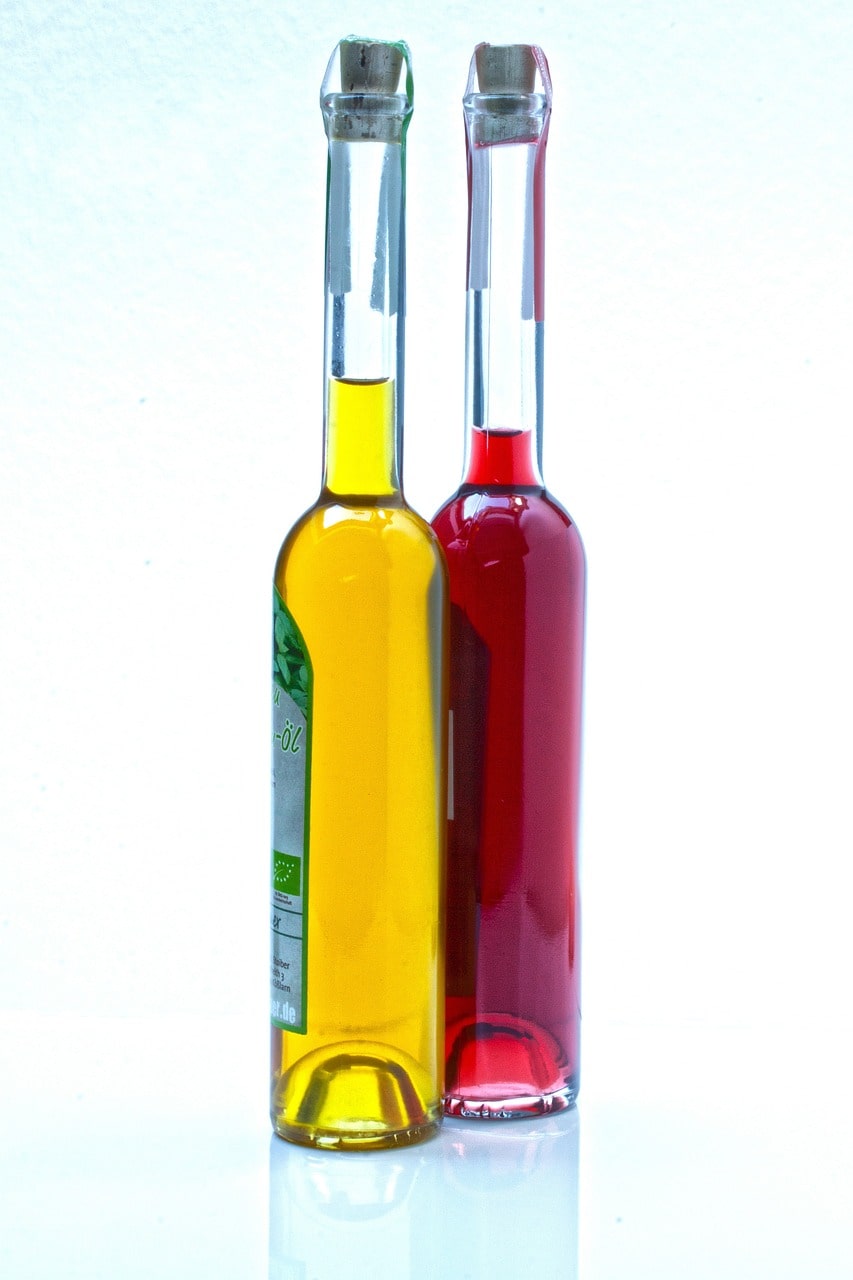
Apple cider vinegar can be a fantastic facial cleanser despite its more specific scent. It also acts as a natural exfoliant when there is more dead skin to remove.
How can apple cider vinegar benefit your skin?
It balances skin pH.
Using skincare with harsh chemicals might ruin the natural protection of the skin and its pH. Apple cider vinegar can help rebalance the pH of the outer layer of the skin. It keeps it functioning optimally, producing the right amount of oil to keep up with acne-causing bacteria.
It exfoliates the skin.
Apple cider vinegar contains malic acid, similar to alpha hydroxy acid. Malic acid works well on acne-prone skin as it gently exfoliates to unclog pores and eliminate bacteria.
It fights blackheads.
Apple cider vinegar has antibacterial actives and can be mixed with baking soda and water to exfoliate and darken blackheads.
It improves hyperpigmentation.
The malic acid in apple cider vinegar may help clear up hyperpigmentation problems such as dark spots. It could reduce melanin production.
Melanin gives skin pigmentation; hence malic acid is excellent for improving hyperpigmentation.
Applying the right moisturizer for your skin type
Moisturizers are emulsions – a blend of oils, water and particular substances called emulsifiers.
They do their magic to make the oil in the water stay together in a skincare product.
Based on the blending procedure, there are two primary types of moisturizers.
Water-based ones are produced when oil is poured and mixed with water. They are suitable for combination and oily skin. These moisturizers are liquid and spread quickly on the skin.
Oil-based moisturizers are made the opposite – water is poured and mixed into the oil. They are suitable for dry skin. The substance is thicker and spreads more difficult on the skin.
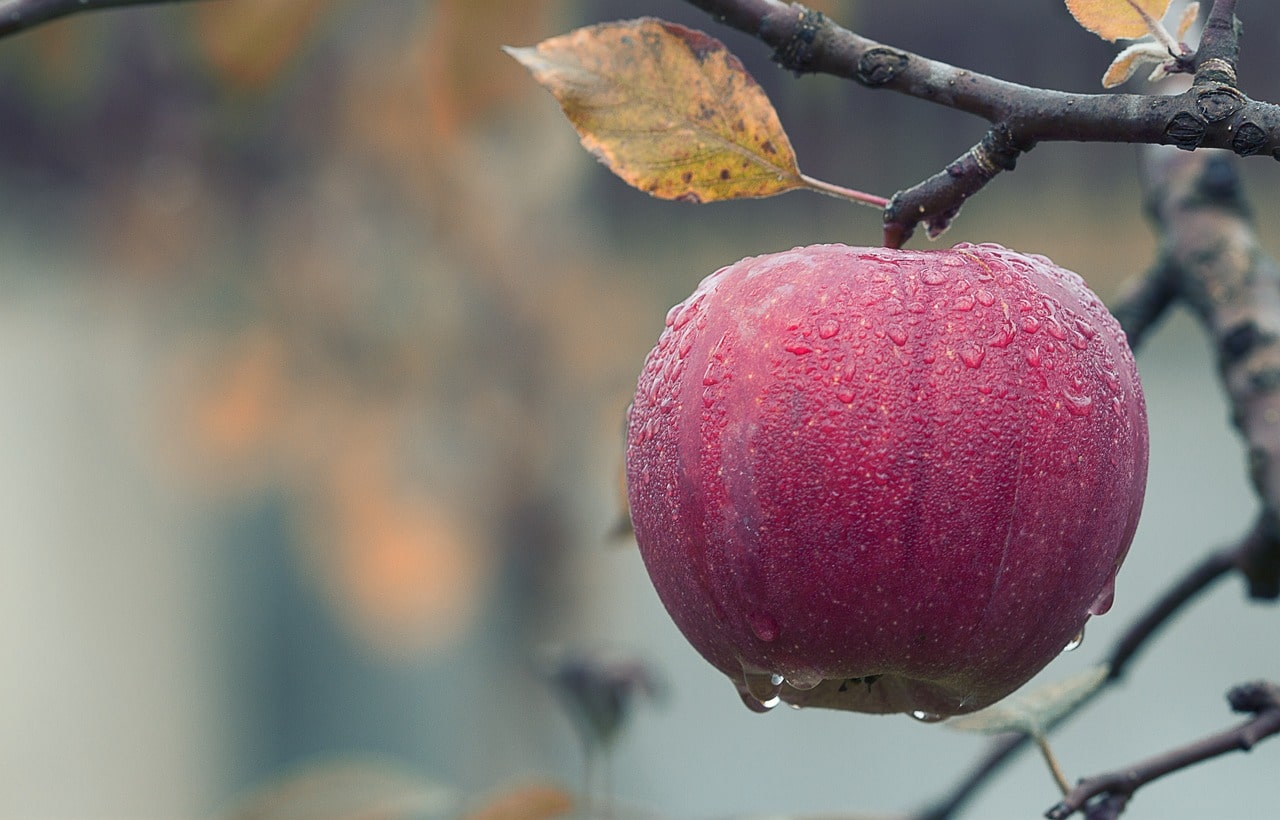
Typically the formula of a moisturizing product would add more ingredients to nourish and protect the skin. Such as:
Cosmetic active agents – add specific properties to the emulsion. Active skin agents may be:
- moisturizing (vegetable glycerin, hyaluronic acid)
- anti-aging or anti-oxidation product (coenzyme Q10, vitamin E)
- soothing (allantoin, chamomile essential oil)
- mattifying (concealer, powder)
- antibacterial (propolis, tea tree)
- restorative (lavender essential oil, provitamin B5)
Preservatives and antioxidants – ensure the longevity of the emulsion and protect it from going rancid
Fragrances and colorants – make the emulsion smell and look better.
Having all these ingredients in a moisturizer, adding a bit of apple cider vinegar is an option to see what happens.
How to mix vinegar and moisturizer?
I have already mentioned that vinegar is acid – a potent substance. It is better to dilute it with water.
Experiment – mix one part vinegar with two or three parts water, then add to your moisturizer. For better consistency, try a water-based moisturizer.
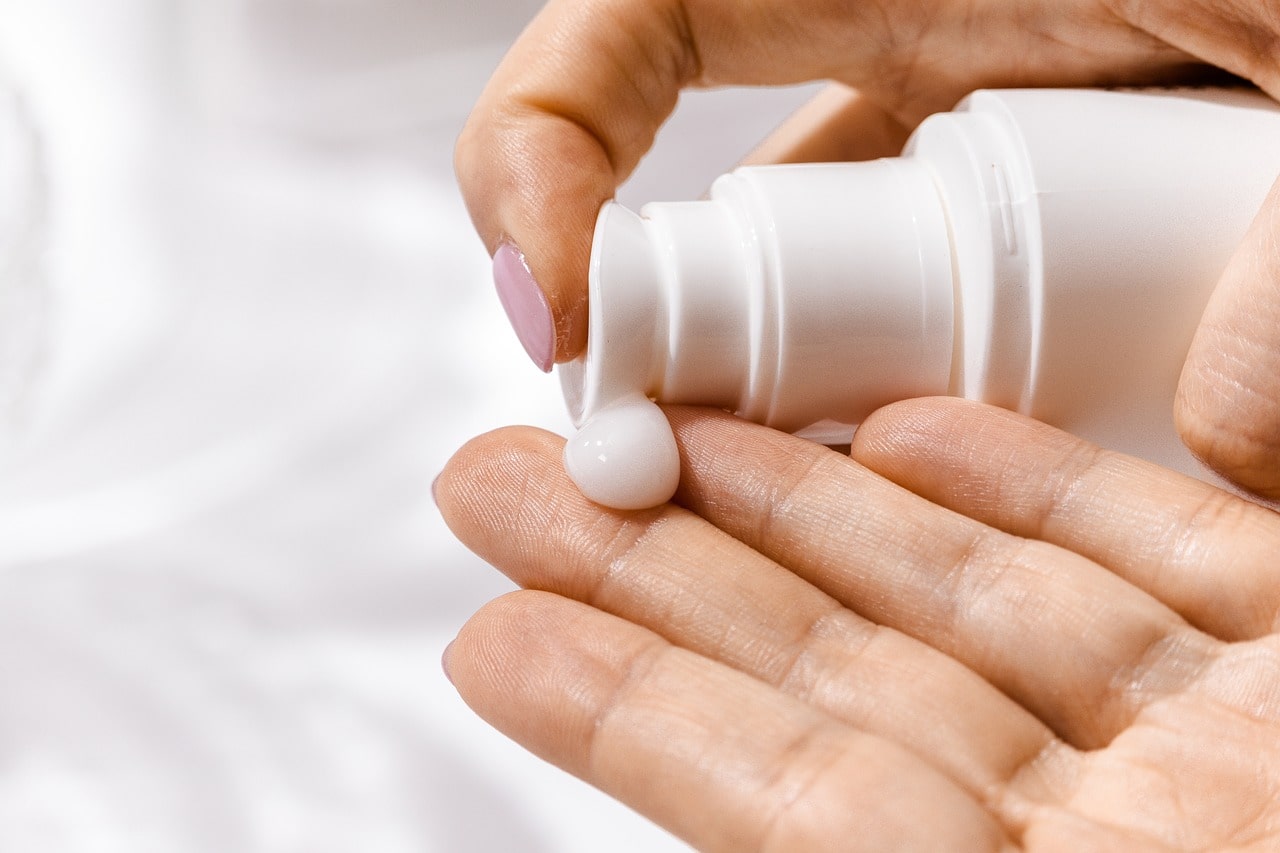
Test the mixture on a small skin patch before using it all over your face.
An alternative hack is making a homemade natural skin tonic, blending apple cider vinegar and water in equal parts.
You can gradually increase the cider quantity when your skin becomes familiar with the liquid.
Your skin will “tell” you when to stop. Use a cotton pad when applying the tonic, and avoid eye contact.
In conclusion
Is it OK to mix vinegar with moisturizer? You are free to test this blend, as it may bring you some good news: ph balanced and exfoliated skin with fewer blackheads and no hyperpigmentation.
Thanks for reading!
Valeria
